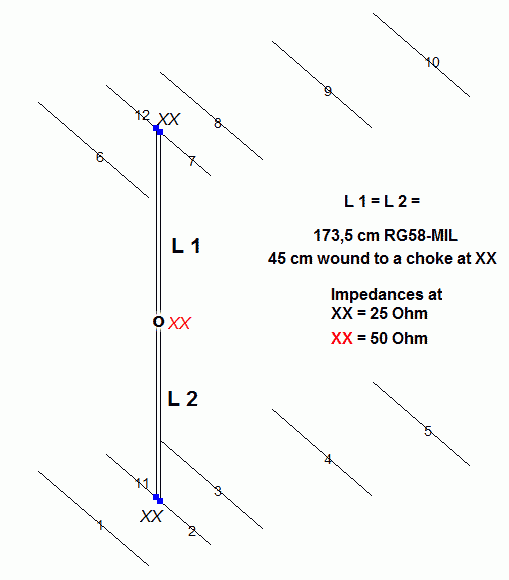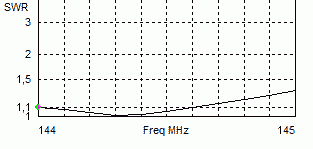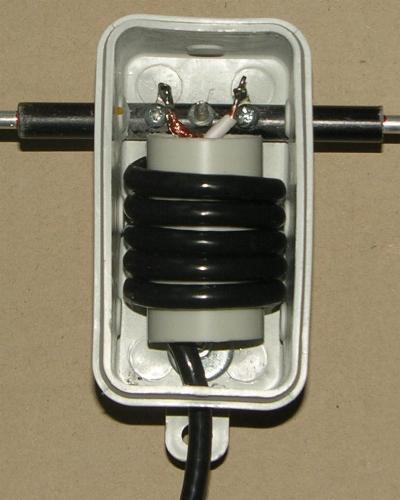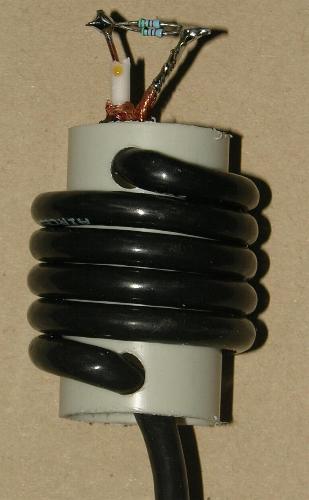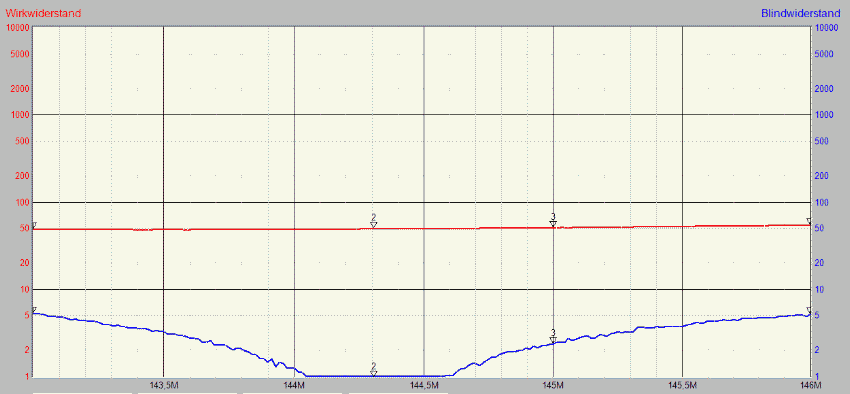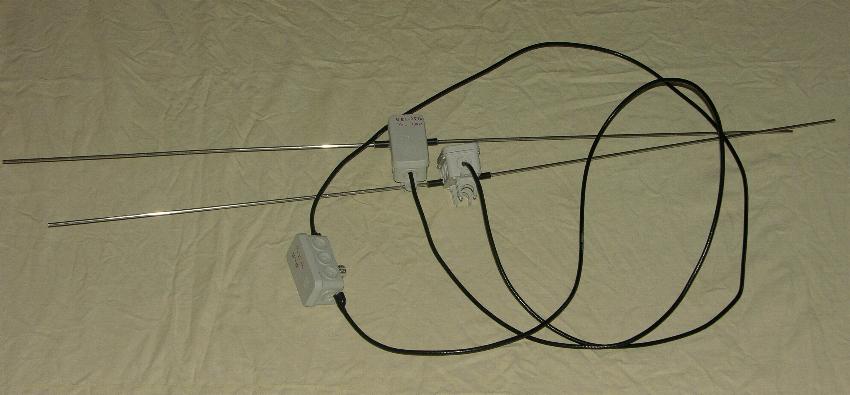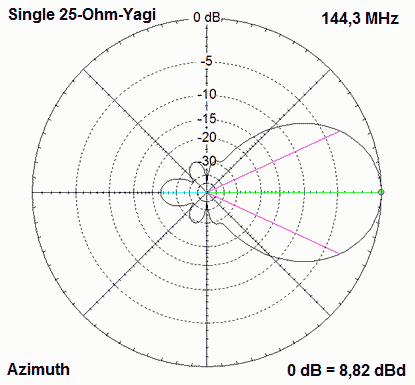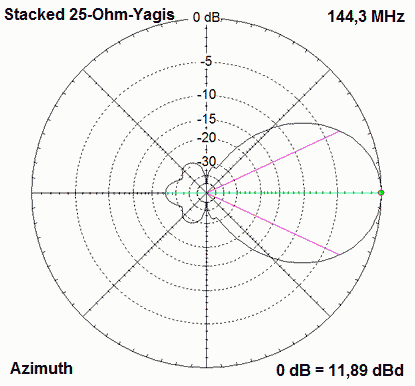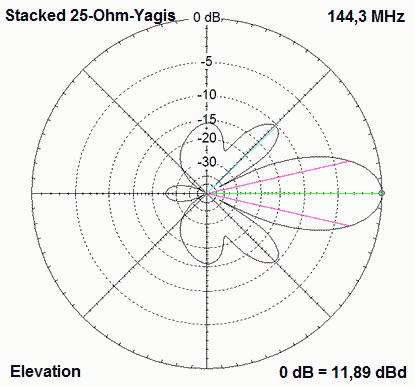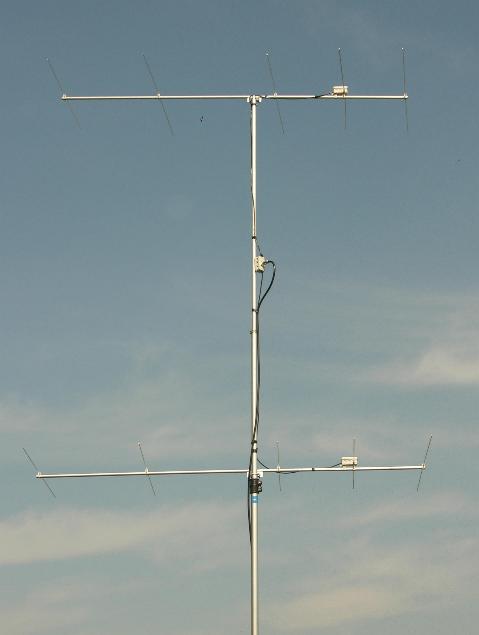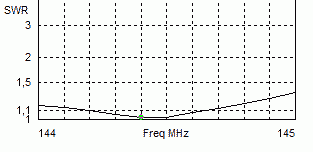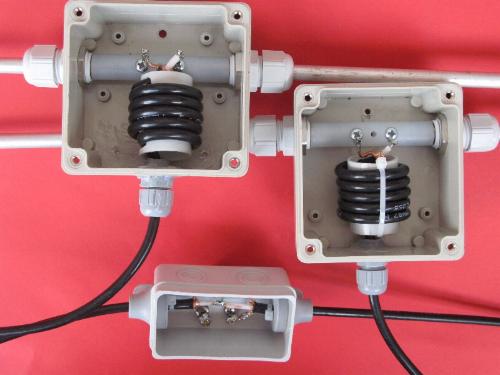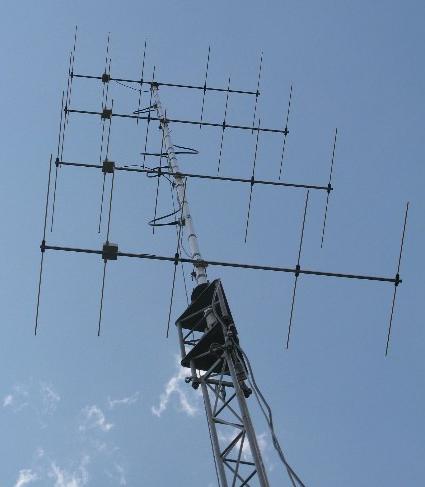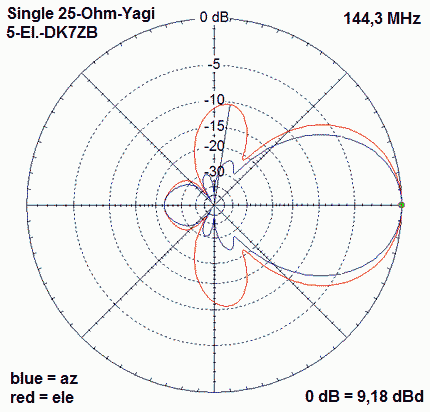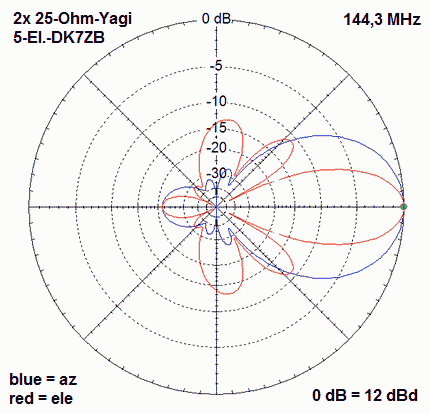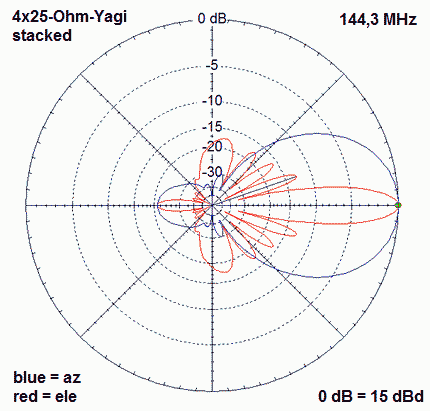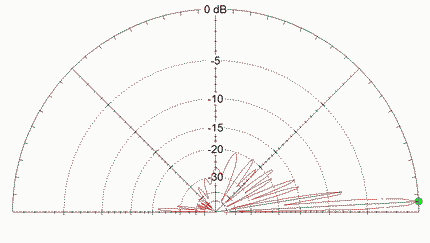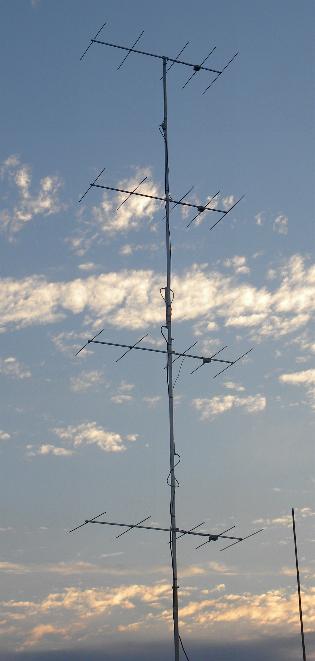 |
Two Versions of stacked 25-Ohm-Yagis (1,80 m and 2,00 m Boom)
The picture left shows shows the 4x5-Element-25-Ohm-Yagis with 2-m-boom and a stacking distance of 2,30 m. Two Yagis are connected together with Aircell-5 transformations lines, the two groups are coupled with a power-splitter as described on the "stacking page". The Yagi-array handles 1 KW HF without any problems and was used for a test in the Alpe-Adria-Contest 2010. The array works excellent with a very good antenna pattern. The measured SWR of the complete group in the common feeding point is <=1,1 beween 144,0 and 144,8 MHz. At not very good band conditions QSOs from central Germany (450 m ASL) to middle Italy were possible, distance 800- 1000 km. The Yagis on the picture are built with 8-mm-elements. The lowest antenna is 6 m above ground, with groundgain you can get 20 dBd gain! The Elevation angle is only 3°, the 3-dB-angle vertical is also only 2,8°. Plots below!  |

